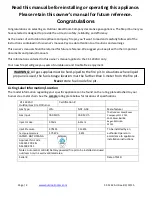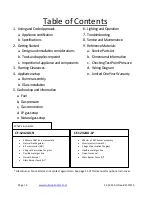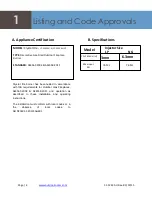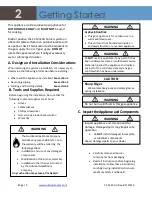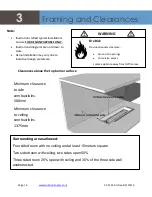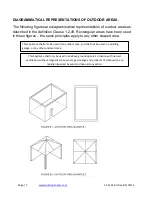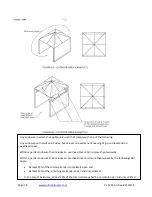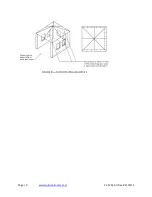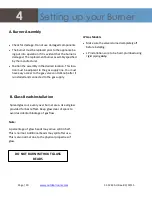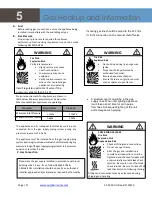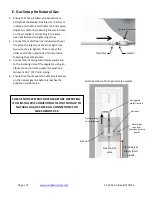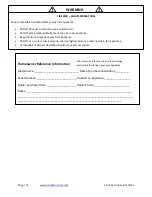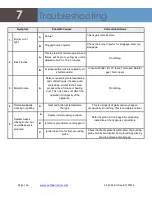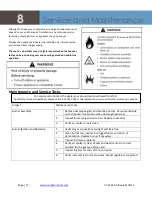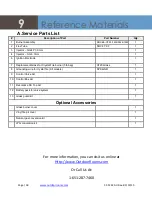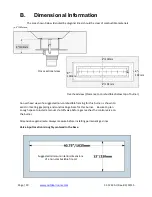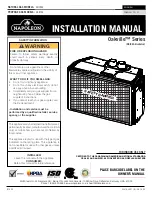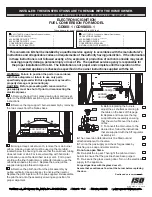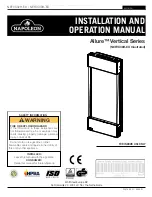
CF-1242 AU Rev-B 3/19/15
5
Gas Hookup and Information
A.
Fuel
Before making gas connections, ensure the appliance being
installed is compatible with the available gas type.
B.
Gas Pressure
Proper input pressures are required for optimum
performance. Gas line sizing requirements need to be made
following AS5601/AG601
Pressure requirements for appliance are shown in
table below. Minimum pressures must be met when
other household gas appliances are operating.
Pressure
Natural Gas
Propane
Minimum Inlet Pressure
Maximum Inlet Pressure
1.13kPa
2.75kPa
2.6kPa 3.5kPa
WARNING
Fire Risk
Explosion Risk
Verify inlet pressures.
High pressure may cause
over fire condition.
Low pressure may cause
explosion.
Verify minimum pressures
when other household gas
appliances are operating
Install regulator upstream of valve if line
pressure is greater than 3.5 kPa
The appliance and its individual shutoff valve must be dis-
connected from the gas supply piping system during any
pressures in excess of 3.5 kPa.
The appliance must be isolated from the gas supply piping
system by closing its individual manual shutoff valve during any
pressure testing of the gas supply piping system at test pressures
equal to or less than 3.5 kPa.
C. Gas Connection
Note: Have the gas supply installed in accordance with local
building codes, if any. If not, follow AS4565:2004 &
AS4558:2011 Installation should be done by an authorized
installer approved and/or licensed as required by the locality.
Incoming gas line should be piped to the 12.7mm
(½ inch) connection on the manual shutoff valve.
WARNING
Fire Risk
Explosion Risk
Gas build-up during line purge may
ignite.
Purge should be performed by
authorized technician.
Ensure adequate ventilation.
Ensure there are no ignition sources
such as sparks or open flames.
A small amount of air will be in the gas
supply lines. When first lighting appliance
it will take a short time for air to purge
from lines. Subsequent lighting of the unit
will not require such purging.
WARNING
CHECK FOR GAS LEAKS
Fire Risk
Explosion Risk
Asphyxiation Risk
Check all fittings and connections.
Do not use open flame.
After the gas line installation is
complete, all connections must be
tightened and checked for leaks with
a commercially available leak-check
solution. Be sure to rinse off all leak
check solution. Be sure to rinse off all
leak check solution following testing.
Fittings and connections may have loosened during
shipping and handling


